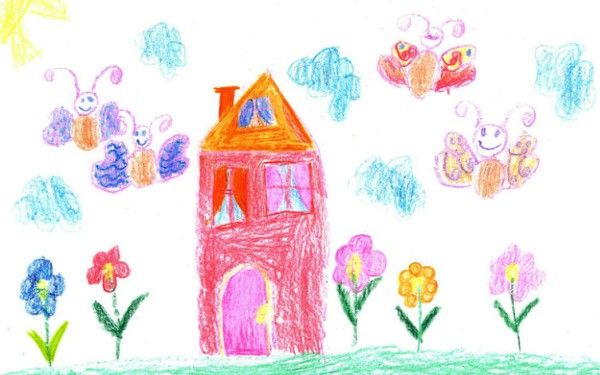
 This article comprises of excerpts taken from a recently-updated guide on Community Care Inform Children about confident direct work. The guide was written by Yvonne Shemmings, a training provider, social researcher and honorary lecturer at the University of Kent. Subscribers can find the full guide as well as a directory of direct work tools on the direct work hub on Inform Children. Yvonne Shemmings is also leading a session at a new Community Care skills workshop on direct work in practice.
This article comprises of excerpts taken from a recently-updated guide on Community Care Inform Children about confident direct work. The guide was written by Yvonne Shemmings, a training provider, social researcher and honorary lecturer at the University of Kent. Subscribers can find the full guide as well as a directory of direct work tools on the direct work hub on Inform Children. Yvonne Shemmings is also leading a session at a new Community Care skills workshop on direct work in practice.What is direct work?
Direct work always has a specific purpose, and can be used in a number of situations.
Generally, direct work can include:
- Exploring children’s memories of events.
- Helping children to process traumatic experiences.
- Helping children move into another family.
- Undertaking lifestory work.
- Helping with social aspects of the child’s life.
Although a relationship with the child is established during direct work, it is not the primary function, and as such cannot take place meaningfully in coffee shops or burger restaurants. However, that is not to say these venues are not useful for informal discussions or building relationships.
Building a trusting relationship
It is only through the relationships we forge with the child that can give you anything of their internal world. Without it the social worker will receive minimal information, which offers little understanding or causes greater confusion about the child’s wishes and feelings.
Spending time with a child who says nothing and is plainly discomforted by the social worker being there is hard for any practitioner to endure. How we begin our relationships matters: the greeting and courtesy you extend, your presence and what you offer as pleasurable activities goes a long way to settle even the most diffident child or one who is experiencing conflict about talking to you.
Recognising the hard emotional work that a child will do in direct work sessions and taking steps to create a nurturing environment can be invaluable. It is always worth asking those who are caring for the child what drinks and snacks he or she can have whilst in the room with you.
Small treats spaced at intervals can make a child feel comforted. We only need to think of our own physical needs to have a cup of tea or coffee to understand how important food and drink can be for a child. It is not something that is often done in direct work sessions because it can be fiddly and time consuming, but for many children it can be one of the keys to helping them unlock the door to their world. Try it and see, even a shared satsuma can be just the thing for a child in anguish to feel contained and understood.
The main thing that children say is helpful in allowing adults to work with them is the quality of that adult’s capacity to listen actively to them and to hear the things they are not saying.
Equally important is that when adults tell the child that something will happen, it does. So, be mindful of the use of language and anything that sounds like a promise is just that to the child. If you say that next time you will play snap again together, remember this and have those cards and the time to do so ready. Reliable, confident, kindly, attentive adults who appear genuinely interested are singled out as special people.
Setting the tone
A general principle of direct work is that it should create the conditions for the child to speak.
It requires the social worker to be an active listener, not a busy doer.
Direct work means being still in oneself in order to respond to the chaos which the child may be experiencing in their mind.
The purpose of direct work is to provide secure conditions for the child, so that the child can feel safe to express their feelings. It consists of quiet, sensitive observation with the aim of occasionally lubricating the process.
Reactions to the child should be congruent with what they are saying and doing, including your tone of voice. Sometimes it is appropriate to be bright and cheerful, but do not give the impression that sessions will always be fun: this can be serious business, and sensitivity and good observation skills are important.
The aim is not to just plough through a number of activities with the child but rather to seek meaning in what the child is expressing – both verbally and non-verbally. To do this requires self-awareness so that the social worker can distinguish their own feelings from those of the child.


 A trauma-informed approach to social work: practice tips
A trauma-informed approach to social work: practice tips  Problem gambling: how to recognise the warning signs
Problem gambling: how to recognise the warning signs 




 Find out how to develop your emotional resilience with our free downloadable guide
Find out how to develop your emotional resilience with our free downloadable guide  Develop your social work career with Community Care’s Careers and Training Guide
Develop your social work career with Community Care’s Careers and Training Guide  ‘Dear Sajid Javid: please end the inappropriate detention of autistic people and those with learning disabilities’
‘Dear Sajid Javid: please end the inappropriate detention of autistic people and those with learning disabilities’ Ofsted calls for power to scrutinise children’s home groups
Ofsted calls for power to scrutinise children’s home groups Seven in eight commissioners paying below ‘minimum rate for home care’
Seven in eight commissioners paying below ‘minimum rate for home care’
 Facebook
Facebook X
X LinkedIn
LinkedIn Instagram
Instagram
Comments are closed.